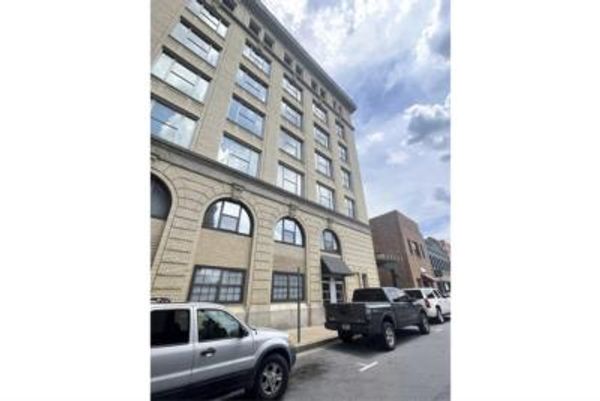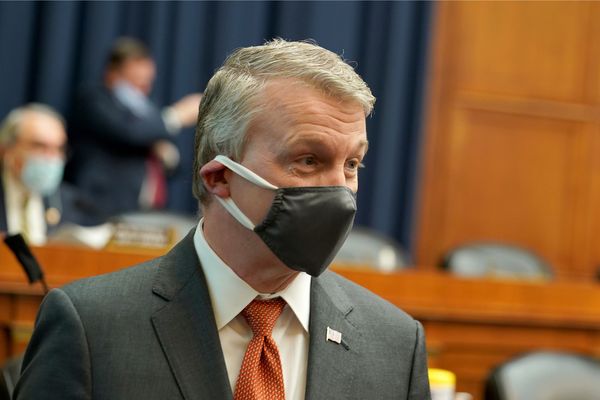
As British travellers discover on a first visit to the US, tipping is deeply embedded in the culture. And it is all too easy to breach etiquette.
The matter was thrust into the spotlight again recently when an American server shared their displeasure with a specific group of diners on Twitter.
“Lmao I f***ing hate Europeans sometimes on god,” wrote user “brecht apologist” on the social media platform. “This table just left $70 on a $700 check after chilling for HOURS. My manager even asked about their service and they were OVER THE MOON about my service so he explained the customary tip is 20% and they were like ‘ok.’ and left”.
Cue a quickly escalating debate beneath the original post, with Europeans, and Brits in particular, keen to explain that, in fact, US tipping culture is not just alien to us, but completely baffling.
So join me, reader, as I attempt to unpack the myriad rules that apply when it comes to obligatory tipping across the Pond.
Who must I tip?
Almost anything that moves in the sphere of travel in the US. Taxi (and Uber) drivers, of course. Bellhops who take your bags to the room. Guides and bus drivers on excursions. And, when eating and drinking, waiting staff and bartenders. This also extends to dining cars on trains, and drinks at airport lounges, though there is no expectation (yet) of tipping airline staff for a safe and punctual flight.
How much for drivers?
Taxi drivers expect an absolute minimum of 15 per cent – anything less (or no tip at all) will appear to him or her that you are awarding yourself a discount. For a smile at the end of the ride, it’s 20 per cent. A good way to pay tips is by having a stash of $1 bills – this goes direct to the driver. On a $20 ride, a $3 tip in cash will be fine.
Uber invites you to tip a broad range of amounts: on a $10 ride, for example, you could be offered options of $1, $3 or $5 – a range of percentages of 10, 30 or 50. In this situation I select “Custom Amount” and pay an extra $2 (20 per cent).
What about hotel staff?
If you are staying at the kind of place where bellhops take your bags to your room, then you will be expected to pay-per-bag – anything from $1 upwards. If the member of staff shows you how to switch on the light in your room, they will be expecting a minimum of $5, even if you have only one modest bag.
Housekeeping staff may leave a handwritten note for you, with the implication that you will leave some US dollar notes for them.
Time to eat…
…which is where the real tipping minefield begins. A decade ago, 15 per cent was considered adequate on a restaurant meal. No longer. A campaign to make 20 per cent the “floor” for a tip is having a strong effect. The minimum is now 18 per cent.
Except in extreme circumstances, the minimum you should leave is 18 per cent. This is, I agree, a ridiculous margin – especially as it is in addition to the 8.875 per cent sales tax on restaurant meals in New York.
The two combine to expensive effect. If you order a burger and a drink for two at a menu price of, say, $39 each in Manhattan, the total you would pay is over $100.
Note that the percentage tip should be based on the pre-tax total.
Are the waiters simply greedy?
No. Employers in many American states are entitled to pay waiting staff at a special below-minimum-wage rate, on the assumption that diners will make up the difference.
For example the New York State Department of Labor says: “The minimum wage for food service workers in New York City is $15 per hour. Their employers can satisfy the minimum wage by combining a cash wage of at least $10 with a tip allowance of no more than $5.” So there has long been an unwritten agreement that diners will tip handsomely.
How do I tip?
Usually by adding the amount to the credit card receipt. Because no one can work out 18 per cent of, say, a $55.55 total in their head, the check will typically contain three options: 18, 20 and 25 per cent. At increasingly many restaurants, the selection is 20, 22 and 25 per cent.
Settling up is all very cumbersome. You choose the one you want (or decide your own “custom amount”), write it into the space on the credit card receipt, then do some difficult adding up.
An easier strategy is to leave actual cash dollars: as it happens, that 18 per cent of $55.55 turns out to be $10 exactly – and a crisp ten-dollar bill will probably be more appreciated than a 20 per cent add-on ($11.11) to the check.
I need a drink
In which case, if you are sitting up at the bar, you should tip the bartender at least $1 per drink even if it is a happy-hour special of $5 for a beer. For elaborate cocktail mixing, you will be expected to tip significantly more.
Might the tip already be added to the bill?
Sometimes a percentage will be added – do not confuse this with sales tax, which is always an extra. Even if, say, an 18 per cent tip is included in the bill, you will still be invited to tip on top. In these circumstances, it is not unreasonable to decline.
A new variation in some restaurants is a mandatory 10 per cent for kitchen staff – with waiters expecting the standard minimum of 18 per cent on the freshly inflated total.
Just a latte, please
In coffee outlets, standard practice is to turn the screen at the till around once the order is confirmed, and invite the customer to select 18, 20, 25 per cent; a custom amount; or no tip. The pressure is on because the staff member behind the counter is watching you.
I always choose “no tip” on the grounds that the product I am buying requires someone to make it, and the only additional “service” element is handing me the coffee. So far I haven’t been beaten up and I don’t believe anyone has spat in the coffee, either.
I get free breakfast with my hotel. So that’s all good, then
Not if any degree of service beyond setting out a basic buffet is involved. You will be expected to tip, say, $5.
If you think, “I’ve already paid for this,” you may find that when you settle the final bill the breakfast staff have self-awarded a tip. The Independent knows of multiple occurrences of this practice.
If these amounts are near-mandatory, what has gone wrong with the system?
Americans are much more tolerant of additions to the basic price than are Europeans, East Asians and Australians.
Does the same sort of thing happen in Canada?
North of the 49th parallel, 15 per cent is still acceptable, and staff appear more forgiving of tipping faux pas. But in a restaurant in Banff, Alberta, I found a note on the menu saying: “We reserve the right to add a 15 per cent gratuity.”
Who, I wondered, is this aimed at? I was shocked to be told by the waiter: “Scots and Australians.”
Listen to Simon Calder’s latest travel podcast: “America, we have to talk about tipping”







